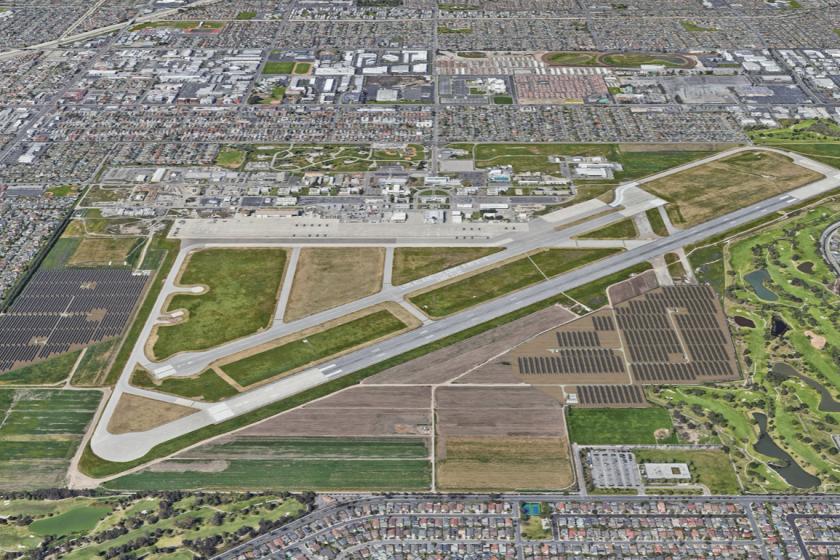With an eye on China, Los Alamitos-based Army division looks at fighting in cities

The 40th Infantry Division headquartered in Los Alamitos recently hosted the U.S. Army’s first weeklong urban warfare course as the service shifts its focus to potentially fighting in densely populated cities.
As China increasingly flexes its military power in the Western Pacific region, American soldiers who have seen nearly 20 years of fighting in the deserts of the Middle East and mountains of Afghanistan could be called upon to help defend Taiwan or the Philippines.
“If the Army plans for urban operations, our adversaries won’t think urban environments are a sanctuary for them,” said Brig. Gen. Robert Wooldridge, deputy commanding general for the 40th Infantry Division headquartered at Joint Forces Training Base Los Alamitos.
Maj. Gen. Laura Yeager, commanding general of the 40th Infantry Division, and Wooldridge have led the charge on urban warfare training partly because they could be called upon to fight in an all-out war with the People’s Liberation Army.
While the U.S. Army has long maintained its Ranger and Mountain Warfare schools, urban warfare has no equivalent training center in the service.
Wooldridge underscored his division’s readiness to fight wherever and whenever they’re called, but he still wants to do everything possible to avoid some of the casualties U.S. forces will endure fighting in megacities.
“If the Army doesn’t conduct specialized training for urban warfare prior to the next conflict, I’m sure that the American soldier will adapt to the requirements of the urban fight and still prevail,” Wooldridge said. “The problem with adapting under fire is that usually ends up costing more soldiers’ lives than if we had trained to succeed in that environment prior to conflict ... so I’m not interested in losing soldiers while they have to learn lessons the hard way.”
Another eye-opening moment was the California National Guard’s activation of nearly 10,000 service members amid the civil unrest following the police killing of George Floyd, Wooldridge said. Soldiers with the 40th Infantry Division were dispatched to help law enforcement protect private property and critical infrastructure in Los Angeles County, San Francisco and Sacramento. Some troops were on the streets within four hours of the call from Los Angeles Mayor Eric Garcetti.
The proposed project is part of the U.S. military’s recognition of climate change and effort to reduce its carbon footprint while providing an alternate energy source during natural disasters.
Although the National Guard’s domestic role is starkly different from combat, some of the lessons can be applied when training for future conflicts in megacities. Soldiers in downtown Sacramento had to stay aware of anyone observing them from parking structures and eight- and nine-story buildings, Wooldridge said. Military leaders also have to be aware of the hazards of sending troops into dense neighborhoods where they are vastly outnumbered by civilians, he said.
Besides classroom-based learning, the Urban Warfare Planners cohort spent Monday at the National Training Center at Fort Irwin with active-duty army units talking through urban warfare training gaps that could be provided by the National Guard.
Among the internationally renowned experts who visited Los Alamitos this week was John W. Spencer, a career infantry soldier and chair of Urban Warfare Studies at the Modern War Institute. By teaching the urban planner course, the 40th Infantry Division will quickly become the Army’s urban operations planning experts, Spencer said.
“What the 40th [Infantry Division] has put together is the first course I’ve ever attended or been a part of addressing the unique challenges, considerations, history and best practices of conducting military operations in urban areas,” Spencer said. “This event is truly revolutionary.”
In a city where there could be up to 40,000 residents per square mile, the Army needs to train soldiers to do as little damage as possible while winning the fight, Wooldridge said.
“I hope we never have to use this, but if we’re planning to take back some city in the Indo-Pacific region maybe some staff officer or planner will think back to the course and say, ‘Thank god we went through this,’” he said.
Daniel Langhorne is a contributor to TimesOC.
All the latest on Orange County from Orange County.
Get our free TimesOC newsletter.
You may occasionally receive promotional content from the Daily Pilot.




